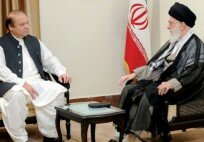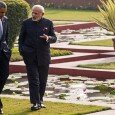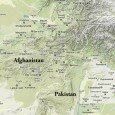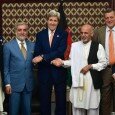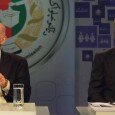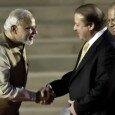Sameer Arshad :
The execution of Afzal Guru smacks of political opportunism as the trial left gaping holes that were ignored at the altar of ‘collective conscience’
Indian political parties have rarely agreed on anything in the last few years, as myriad corruption scandals have had them at each other’s throats.
But they spoke in one voice to hail Afzal Guru’s hanging on February 9 even as rights groups maintained that it was carried out on the basis of a flawed trial.
The 43-year-old Kashmiri was hanged secretly and buried inside Delhi’s Tihar Jail eight years after the Supreme Court upheld his conviction for providing logistical support for the 2001 attack on the Parliament that killed nine and brought India and Pakistan on the verge of another war.
Frenzied celebrations over the hanging in TV studios and on the streets drowned voices of dissent over the execution. Activists maintain that the trial was flawed from the beginning as Guru was not given proper legal representation.
Author Arundhati Roy wrote Guru was without a lawyer at the most crucial stage of the case when evidence is presented, witnesses cross-examined and foundations of the argument laid.
She added that the court-appointed lawyer did not visit him even once or summon any witnesses in his defence or cross-examine the prosecution ones.
Crucially, the apex court had confirmed Guru’s sentence on the basis of circumstantial evidence and to satisfy the “collective conscience of the society’’, something that prompted Human Right Watch to urge India to “end this distressing use of executions as a way to satisfy some public opinion”.
Roy contextualized the “collective conscience”, saying the trial began in May 2002 when the post 9/11 frenzy still convulsed the world and the U.S. was gloating over its “victory” in Afghanistan.
“In the state of Gujarat, the massacre of Muslims by Hindu goon squads, helped along by the police and the state government machinery that had begun in late February, was still going on sporadically. The air was charged with communal hatred. And in the parliament attack case the law was taking its own course.’’
Many commentators have linked the sudden execution to Hindu nationalist leader Narendra Modi’s rise and the ruling Congress’s attempt to steal his thunder.
Modi, believed to be complicit in the 2002 anti-Muslim pogrom, is expected to be his Hindu nationalist Bharatiya Janata Party (BJP)’s prime ministerial candidate in the 2014 elections. The BJP that often accuses the Congress of Muslim appeasement had made Guru’s execution an issue in successive elections.
With the Congress facing worst crisis in recent times, the execution is seen as a desperate attempt to salvage its position.
Thus the hanging was carried out after Guru’s mercy plea was rejected even as many other condemned prisoners were ahead of him on the pending pleas before the president. He was not allowed to challenge the plea’s rejection before the Supreme Court while another petition challenging the execution of long-term death row convicts remains pending.
The apex court had absolved Guru of charges under the Prevention of Terrorist Activities Act, as the investigation into the case was based on his “unreliable” confessional statement set aside due to “lapses” and “violations of procedural safeguards”.
Several other questions dog the trial including the ones on his association with the Jammu & Kashmir police’s notorious Special Task Force (STF). Open magazine cited rights lawyer Nandita Haksar as saying that Guru’s letter, accusing STF DSP Davinder Singh of having coerced into taking one of the attackers to Delhi, was never placed before the trial court.
Guru was released a year before the attack after the STF had detained him for his links with one of the attack “masterminds” killed in 2004. Singh was quoted as saying he had to release him under a senior officer Ashiq Bukhari’s pressure.
The magazine reported that Guru had written to lawyer Sushil Kumar about this and Rs1 lakh bribe that his wife had to arrange after selling off her jewellery to bribe the STF for his release.
“If Afzal was involved in terror activities at the time, either Davinder Singh or Bukhari was guilty of gross dereliction of duty. If a bribe was taken to release him, then it compounds the culpability of a force that could perhaps have foiled the parliament attack,’’ wrote Mihir Srivastava in Open.
Thane (Maharashtra) police chief was quoted by him as saying one of the slain parliament attackers was the namesake of four alleged LeT operatives his force had handed over to the J&K police in 2000. The commissioner had spotted similarities between the blueprints, maps, arms and ammunition seized from the four and the material recovered from the five slain parliament attackers.
Srivastava described this as “another significant development” that the J&K police brushed aside. They had ignored a Thane court’s repeated summons to produce the four before it.
The journalist’s investigation revealed that one of four was indeed killed in the parliament attack. “I procured all their details available, including pictures, and concluded that one of the four arrested in Thane was among those shot that day: the hairline and nose matched, as did a cut over the left eyebrow.’’
Srivastava wrote his interest in the case piqued in 2005, when he heard a senior cop describe the parliament attack as “the biggest fake encounter in India’’.
His piece perhaps explained the secrecy surrounding the execution. Reports said even Guru was told about his execution hours before his hanging, which coincided with the harshest clampdown in Kashmir and opened old wounds of India’s iron fisted counter-insurgency campaign.
The clampdown was another attempt to put a lid on anger over the manner in which Guru’s family was kept in the dark over the execution.
Hundreds of AK47 wielding troopers enforced a blanket curfew while Internet, TV channels were banned along with newspapers for days.
Yet some audacious youth managed to dig a grave for Guru and erect an epitaph hailing him as the “nation’s martyr” next to that of another empty one of JKLF founder Maqbool Bhat in Srinagar’s Martyrs’ Graveyard. Bhat was also hanged and buried inside Tihar Jail in 1984, providing one of the sparks that triggered the Kashmiri Intifada.
The writer is a journalist based in New Delhi.





























































